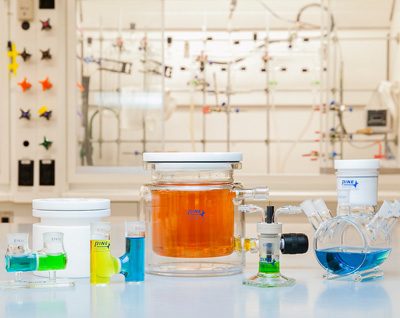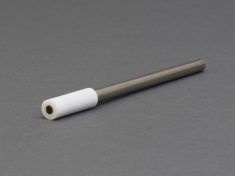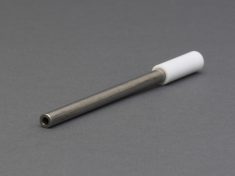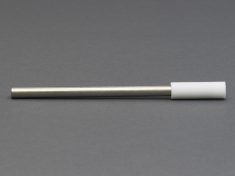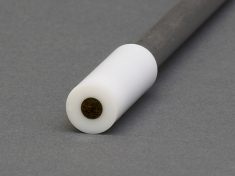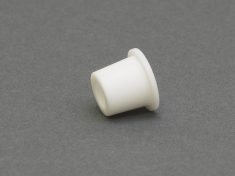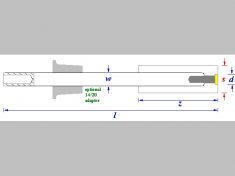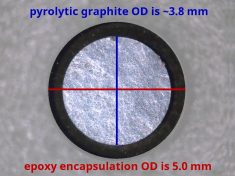| # | Description | Price in USD | |
|---|---|---|---|
| Advanced Carbon Material Electrodes | |||
| AFE1E050GE |
Edge-Plane Pyrolytic Graphite Electrode epoxy encapsulated - incompatible with most non-aqueous solvents |
||
| AFE1E050GB |
Basal-Plane Pyrolytic Graphite Electrode epoxy encapsulated - incompatible with most non-aqueous solvents |
||
| Accessories | |||
| ACE1H1420 |
E1 Series PTFE Sleeve Mount |
||
To view pricing or purchasing options in your country, please register or login to your account.
TEMPERATURE RANGE: 10°C - 25°C — Electrode damage may occur at temperatures outside this recommended range.
- Pyrolytic Graphite Disk OD: ~3.8 mm
- Encapsulating Epoxy OD: 5.0 mm
- PTFE Shroud OD: 12.0 mm
- Overall Length: 152 mm
- Standard Banana Connector
- Mounting Adapter for 14/20 Port (included)
- Compatible with many Pine Standard Volume Cells
See "Description" tab below for additional precautions and information.
To view pricing or purchasing options in your country, please register or login to your account.
- Pyrolytic Graphite Disk OD: ~3.8 mm
- Encapsulating Epoxy OD: 5.0 mm
- PTFE Shroud OD: 12.0 mm
- Overall Length: 152 mm
- Standard Banana Connector
- Mounting Adapter for 14/20 Port (included)
- Compatible with many Pine Standard Volume Cells
TEMPERATURE RANGE: 10°C – 25°C — Electrode damage may occur at temperatures outside this recommended range.
Visit our YouTube channel for helpful instructional videos regarding the use and maintenance of this and many other Pine Research products!
| Document # | Title |
|---|---|
|
DRP10016 |
E1E Series Electrode Information |
|
DRK10013 |
Pine Research Instrumentation Polishing Guide |
|
DRP10015 |
Pyrolytic Graphite Information |
|
DRK10135 |
Electrode Shrouds Overview |
|
DRK10062 |
Electrode Compatibility And Application Overview |
| Material | Link |
|---|---|
|
SDS Forms |



